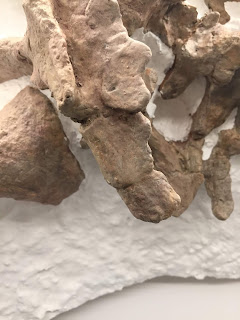Below are images taken from the natural history museum in London as well as the museum of zoology in Cambridge. Bellow are the refined images from both trips and are the images i find most useful going forward looking at museum display techniques. As well as this i visited the shell museum in Glandford however i have no documentation of this due to loosing my phone before saving these images. Must remember to always back up my documentation!
Looking back on the images i took and what i saw while looking round i made a few points to look at when exploring museum display techniques:
- Always good lighting, often back lit
- glass case displays often to protect the artefacts
- spacial awareness - everything evenly spaced and often in size order
- labelling clear and simple, making sure its straight to the point - informative without being descriptive - descriptive text is often to the side of the artefact
- Animals displayed in formaldehyde jars all include labels and other relevant objects (plants, opposite sex etc)
- hanging fixtures - an abundance of different ways to fix each object. - no fixture is hidden as such its just as important as the artefact itself, without it the artefact would get damaged













































Comments
Post a Comment